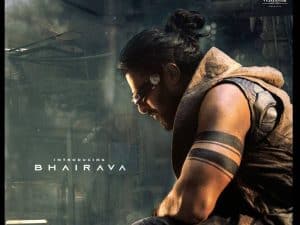The Shankar-Jaikishan duo, hailing from different parts of India, accidentally met in Mumbai and went on to become the superstars of the world of Hindi Film Music. Shankar-Jaikishan were two persons, but their names became one. In fact, Shankar-Jaikishan became synonymous with Hindi Film Music, especially during the Golden Era of Hindi Cinema.
Shankar Raghvanshi Singh, of the Shankar-Jaikishan duo, hailed from Hyderabad and his birth centenary falls on October 15, 2022. Jaikishen Dayabhai Panchal hailed from Gujarat. Together, Shankar-Jaikishan revolutionized Hindi film music.
At a time when Hindi film music was based on limited musical instruments, they introduced the concept of a western orchestra. Elaborate musical instruments, like an orchestra in a symphony, that, too, on an epic scale, were brought into Hindi cinema by Shankar-Jaikishen, making it iconic. Jis Desh Mein Ganga Behti Hai in 1960, marked the new peak in Shankar-Jaikishen music. Lata Mangeshkar’s range and pitch were in full bloom in the song, Aa ab laut chale, signalling the dawn of the Golden Era in Hindi Cinema.
Nehruvian Idealism was principally and primarily responsible for revolutionary changes sweeping across the Hindi cinema. There was hope and optimism in the air that found expression in the varied fields of national endeavour. It was reflected in the world of Hindi Cinema. Great Urdu poets, like Sahir Ludhianvi, Shakeel Badayuni and Kaifi Azmi, took to writing film lyrics. That was the time Shankar-Jaikishan appeared on the scene. The greatest works of art were created and Hindi Film Music peaked during the Nehruvian Era.
Shankar-Jaikishen heralded sweeping changes in Hindi film music. In fact, Hindi film historians may well demarcate two eras in Hindi Cinema, ‘Before SJ and After SJ‘.
Since their debut in Barsaat in 1949, Shankar-Jaikishan duo dominated the Hindi Cinema like a colossus. It was not just giving a hit song in a film. Practically every song in the film was a hit. And they would deliver at least two to three hit films every year, on average.
Ever since their advent, Hindi film music has not remained the same. It changed for the better, blazing a new trail in the firmament of Hindi Cinema.
Shankar from Hyderabad and Jaikishan from Gujarat, both met accidentally in Mumbai. Shankar, who was by then working in Prithvi Theatre in Mumbai, got a job there for Jaikishan. Shankar was a tabla player and Jaikishen played the harmonium. Both became assistants to Ram Ganguly, who gave the musical score for Raj Kapoor’s first film Aag in 1948.
Raj Kapoor was then working on Barsaat, assembling a new team. Barsaat became the biggest landmark in Hindi cinema. Raj Kapoor introduced a whole new team that went on to acquire iconic status. Shankar-Jaikishen was given the break as music director. Shailendra and Hasrat Jaipuri were brought in to write the lyrics. Mukesh, who was singing in the style of Kundan Lal Saigal, and Lata Mangeshkar, who used to imitate Noor Jehaan, were both brought into their own elements and they both began to sing naturally, from Barsaat.
Barsaat, in 1949, opened the doors for a musical tsunami. It swept Hindi cinema off its feet for nearly a quarter century. Shankar-Jaikishen also started a new trend of having a title song for each film, starting with Barsaat, which became a huge hit.
Two years later, came Awara, made in 1951. The title song, Awara hun, became a hit across the world, not just in India. Saanjh Aur Savera, Raj Kumar, Love In Tokyo, An Evening In Paris and Around the World, which continued the trend of having title-song, also became runaway musical hits.

Shankar-Jaikishan reportedly used to charge a staggering fee of Rs 5 lakh per film. The reason was that films in those days were mostly musicals. But for Arzoo, they charged a whopping Rs 10 lakh. And sure enough, it is the biggest-ever hit of Shankar-Jaikishen. Chhalke teri aankhon se sharaab aur ziyada; Ajee rooth kar ab kahaan jaaiye ga; Aie nargis-e-mastana, bas itni shikhaayat hai; and Aie phoolon ki raani, bahaaron ki mallika, still continue to be the most haunting melodies.
Flamboyant numbers, like Yahoo, chahe koyee mujhe junglee kahe in Junglee; Jaane waale zara hoshiyaar, yahaan ke hum hain Raj Kumar in Raj Kumar; Japan, Love In Tokyo in Love In Tokyo; and Around the World in Eight Dollars in Around the World were the hallmark of Shankar-Jaikishen music.
Yet, Shankar-Jaikishen could come up with some very soft songs. For instance, Sur na saje, kya gaun main in Basant Bahaar; Tu pyaar ka saagar, teri ek boond ke pyaase hum in Seema; Zindgi mujh ko dikha de raasta, tujh ko meri hastraton ka waasta in Sanjh Aur Savera; Tadap yeh din-raat ki, kasak yeh bin baat ki, Neel gagan ki chhaon mein and Tumhe yaad karte-karte, all in Aamrapali; and Oh mere sanam, oh mere sanam, do jism magar ek jaan hain hum, in Sangam, are still unbeatable.
In this category comes Teesri Kasam, produced by lyricist Shailendra, for which Shankar-Jaikishen composed some of the finest songs. These include Duniya banaane waale kya tere man mein samai; Sajan re jhoot mat bolo Khuda ke paas jana hai; Sajanwa bairi ho gaye humaar; and Aa, aa aabhija, raat dhalne lagi, Chand chhup ne chala. There was charm and magic of folk music in these songs.
Musicals Hits
Shankar-Jaikishen delivered many musical hits in Hindi Cinema. In the 1950s, there was a string of musical hits. These include Daagh and Yahudi, which had defining music. Aie mere dil kaheen aur chal, gham ki duniya se dil bhar gaya, dhoond le ab koyee ghar naya in Daagh and Yeh mera deewanapan hai, ya mohobat ka suroor, tu na pechaane to hai yeh teri nazron ke qusoor in Yehudi were huge hits in the 1950s.
Aah, Chori-Chori, Shree 420, Rajhat, Halaku, Katputli and Anari were the biggest musical hits of those times.
Aajao tadapte hain armaan, ab raat ghuzarne waali hai in Aah; Yeh raat bheegi-bheegi in Chori-Chori; Pyaar huva iqraar huva hai pyaar se phir kyon dar ta hai dil in Shree 420; Aja ki intezaar mein jaane ko hai bahaar bhi and dil ka na karna aitbaar koyee, bhule se bhi na karna pyaar koyee in Halaaku; Bol ri katputli dori kaun sangh baandhun in Katputli; and Kisi ki muskurahaton pe ho nissar in Anari remain evergreen songs to this day.
Golden Era
1960 marked the beginning of revolutionary changes in the Hindi film music. Beginning with Jis Jis Desh Mein Ganga Behti Hai, songs like Sau saal pehle, mujhe tumse pyaar tha and the title song in Jab Pyaar Kisi Se Hota Hai in 1961 were trendsetters.
Baharon phool barsaao, mera mehboob aya hai in Sauraal and Mehtab tera chehra and Ek sher sunaataa hun main, in Aashiq, set a new benchmark. Bol meri taqdeer mein kya hai mere humsafar ab to bataa in Haryaali Aur Raasta and the title-song in Dil Tera Diwana were such big hits. The biggest musical hit was Professor. It had songs like Aawaaz deke hume tum bulaao; Main chali, main chali peechhe-peechhe jahaan; and Aie gulbadan continue to be haunting melodies.
Ek Dil, Sau Afsaane has similarly haunting songs. Apne Huve Paraye title-song remains amongst the best compositions of Shankar-Jaikishen. Dil Ek Mandir was a similar musical hit, with songs like Ruk ja raat, tehar ja re chanda and Yaad na jaaye, beete dinon ki.
April Fool and Raj Kumar are among the big super-hit musicals of Shankar-Jaikishan. Meri mohobat paak mohobat and Unki pehli nazar kya asar kar gayi, mujh ko kya ho gaya hai Khuda jaane in April Fool became a rage. Apart from the title-song of Raj Kumar, Dilruba, dil pe tu yeh sitar kiye ja were great hits. Similarly, Din sara ghuzaara tore angna, ab to bhi jaane de more sajna, mere yaar shaba-qair in Junglee was a class apart.
Zindagi had some of the most fabulous songs. Hum dil ka kanwal denge jis ko, ho ga koyee ek hazaaron mein; Hum ne jafa na seekhi, unko wafa na aayee; and Hum pyaar ka sauda karte hain ek baar, were among their hit numbers.
Hyderabad Influence
Shankar, being from Hyderabad, was responsible for folk-based song, Naach re man Batkamma in Raj Kumar, which is inspired by Telugu folklore.
Another song is Ramayya vastavaya in Shree 420. For Shankar, Ramayya vastavaya became a dummy word for composing the tune. It caught the fancy of Shailendra, who was present there. Ramayya vastavaya is an equivalent of mere mehboob kab aaoge. Shailendra instantly made it the mukhda, adding Maine dil tujh ko diya and went on to compose the antaras for the song that became iconic.
In Gumnaam, there was another song, Batkamma, Batkamma ekada potao ra. Shankar is also credited with introducing Sharda as a singer. Her songs in Suraj, Gumnaam (Jaan-e-chaman, shola badan pehlu mein aajaao) and Around the World became a hit.
As it is said, Har kamaal ko zawaal hai. After every peak faces a decline. The tragic demise of Jaikishan, ended the greatest musical duo of Hindi cinema. But Shankar continued with the trademark name of Shankar-Jaikishan in his later films. Be-Imaan in 1972 and Sanyasi in 1975 are examples. The music was good, but the magic was missing.
Shankar-Jaikishan will remain synonymous with Hindi film music for a very long time to come.







